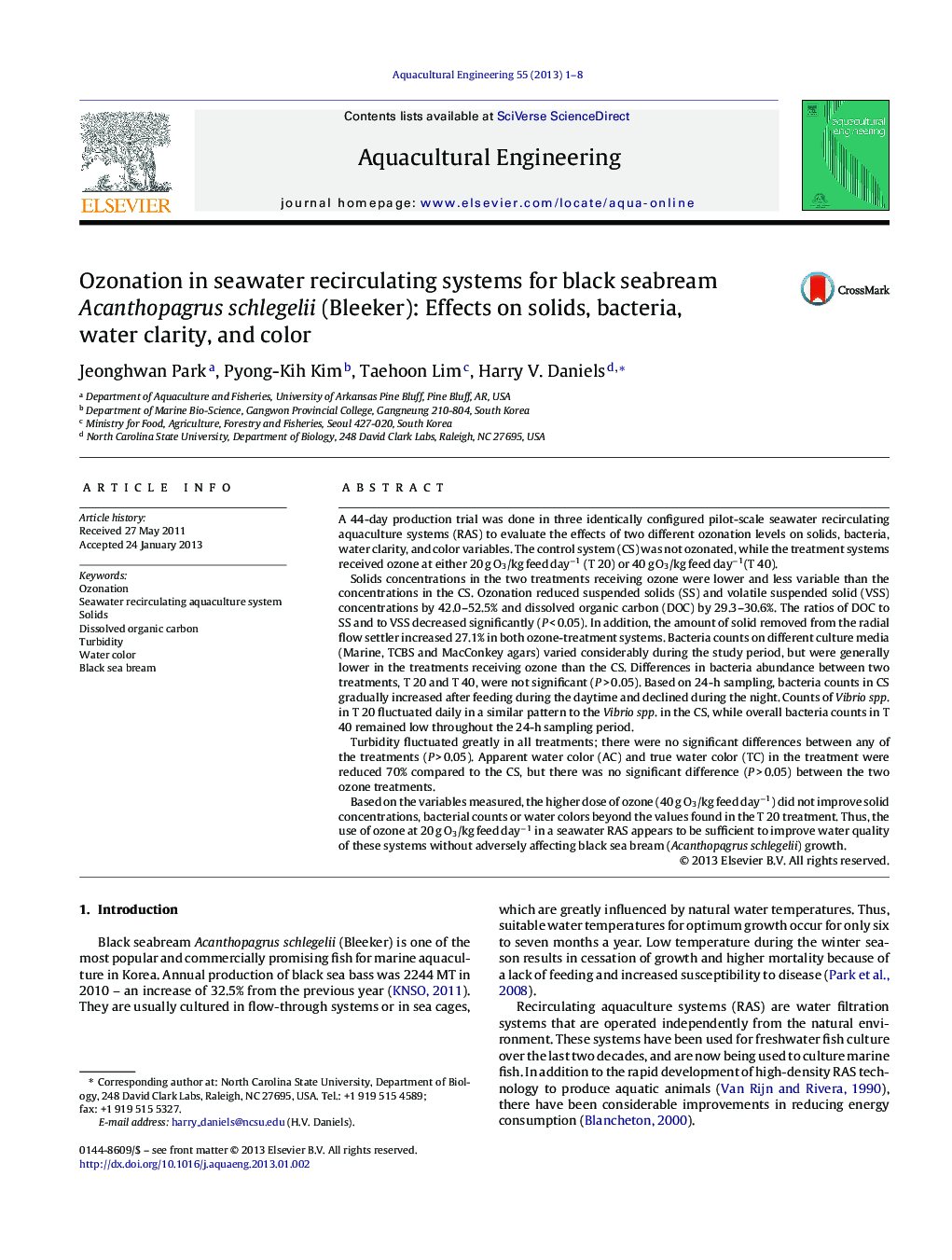| کد مقاله | کد نشریه | سال انتشار | مقاله انگلیسی | نسخه تمام متن |
|---|---|---|---|---|
| 4527190 | 1625715 | 2013 | 8 صفحه PDF | دانلود رایگان |

A 44-day production trial was done in three identically configured pilot-scale seawater recirculating aquaculture systems (RAS) to evaluate the effects of two different ozonation levels on solids, bacteria, water clarity, and color variables. The control system (CS) was not ozonated, while the treatment systems received ozone at either 20 g O3/kg feed day−1 (T 20) or 40 g O3/kg feed day−1(T 40).Solids concentrations in the two treatments receiving ozone were lower and less variable than the concentrations in the CS. Ozonation reduced suspended solids (SS) and volatile suspended solid (VSS) concentrations by 42.0–52.5% and dissolved organic carbon (DOC) by 29.3–30.6%. The ratios of DOC to SS and to VSS decreased significantly (P < 0.05). In addition, the amount of solid removed from the radial flow settler increased 27.1% in both ozone-treatment systems. Bacteria counts on different culture media (Marine, TCBS and MacConkey agars) varied considerably during the study period, but were generally lower in the treatments receiving ozone than the CS. Differences in bacteria abundance between two treatments, T 20 and T 40, were not significant (P > 0.05). Based on 24-h sampling, bacteria counts in CS gradually increased after feeding during the daytime and declined during the night. Counts of Vibrio spp. in T 20 fluctuated daily in a similar pattern to the Vibrio spp. in the CS, while overall bacteria counts in T 40 remained low throughout the 24-h sampling period.Turbidity fluctuated greatly in all treatments; there were no significant differences between any of the treatments (P > 0.05). Apparent water color (AC) and true water color (TC) in the treatment were reduced 70% compared to the CS, but there was no significant difference (P > 0.05) between the two ozone treatments.Based on the variables measured, the higher dose of ozone (40 g O3/kg feed day−1) did not improve solid concentrations, bacterial counts or water colors beyond the values found in the T 20 treatment. Thus, the use of ozone at 20 g O3/kg feed day−1 in a seawater RAS appears to be sufficient to improve water quality of these systems without adversely affecting black sea bream (Acanthopagrus schlegelii) growth.
► Application of ozone to seawater recirculating systems was optimum at a dose of 20 g O3/kg feed day−1
► Ozonation greater than 20 g O3/kg feed day−1 do not improve water quality
► Ozonation at 40 g O3/kg feed day−1 caused minor histological changes in cultured black sea bass.
Journal: Aquacultural Engineering - Volume 55, July 2013, Pages 1–8